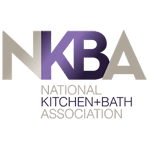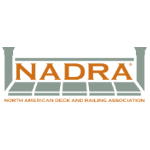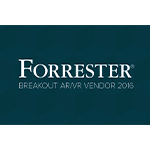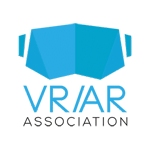Jargon: What’s another word for lingo?
Working in high-tech industries like Virtual Reality and Augmented Reality necessitates the use of a specialized vocabulary. For the 3D Cloud staff, there’s simply no way to talk about VR and AR without referencing jargon like HMD, SDK, point cloud and pixel density. But there’s a difference between knowing the vernacular of your chosen field and burying the listener in a stream of obscure words and phrases in the hopes of sounding smart.
Jargon is important and helpful, but it’s also easy to abuse. How do you know if you’re jargoning correctly?
What is Jargon? How does it work?
The concept of jargon is easy to understand: Small groups of people working in a given field will often invent a vernacular to describe things or concepts in a unique way. This can be born out of necessity, with the jargon working as a linguistic shortcut to the point. Saying an Army private went “AWOL” is quicker and easier than explaining that they are “Absent Without Leave” after abandoning their post. A doctor might ask a nurse to monitor the patient’s BP, and the RN will know that means “blood pressure” and not “back pain.”
Jargon can also be a clever, memorable way of describing something. Business people talk about “sweat equity,” which sounds more impressive than “working your butt off month after month to earn a place at the company.” When a cop says “the perp assumed room temperature,” you can safely assume someone is dead. There’s also a growing assortment of Internet jargon — TTYL, BFF and LOL, to name a few — that straddle the line between necessity and wit.
In the beginning: The origins of jargon
So where does all this jargon come from? 3D Cloud Chief Technology Officer Barry Besecker shared a story that encapsulates how jargon gets adopted in the workplace. The jargon in question: Kinematic Work Envelope. Breaking the word down, “Kinematic” refers to the classical description of the motion of points in space, objects and groups of objects; “work envelope” is a convoluted way of saying “work space.”
So what would you guess “Kinematic Work Envelope” means?
“It’s the volume of space that a machine needs to do its work,” Barry explains. “Like when a door swings, they mark the floor where you shouldn’t walk or you’ll get whacked by it.”
And where did the term come from? “When we were talking about building a VR machine for the Air Force, we looked at robots and they had a specification called the ‘kinematic work envelope,’” Barry explains. “Vince [Kilian, 3D Cloud Product Specialist] and I thought that was funny, so we use the term whenever we can — whether it applies or not.”
What we have here is failure to communicate
While kinematic work envelope has developed a specific meaning and usage within the 3D Cloud office, it’s doubtful that anyone outside the company would know what Barry or Vince were talking about if they dropped it in conversation. Therein lies one of the pitfalls of jargon: it can be incomprehensible to an audience not “in on” the meaning.
Another pitfall: The use of jargon to sound smart while actually saying nothing at all. (See above video.) Sales Operations Manager Levi Bruce provided a tongue-in-cheek example of just such an exchange when I asked him for an example of jargon: “I will circle back by Friday if I can think of any synergies between this and a project upper management has me on. My bandwidth is limited this week as I have a lot on my plate, but ping me if you don’t hear from me by EOD Thursday to make sure it’s still on my radar. I will do my best to think outside the box on this one, so that you can hit the ground running. Thanks for getting the ball rolling, and at the end of the day, we can always take this convo offline.”
It’s wrong to hit people, but if you got that email you’d be tempted, right?
The best jargon is instantly memorable
 When jargon is used correctly, it’s capable of boiling down a complex concept into one simple, memorable word or phrase. For 3D Cloud Program Manager Shawn Rothery, that word is cake. “Before we embark on modeling 1000 products for a new client, app, or platform, we’ll bake a few cakes. In other words, we create a handful of models end-to-end — creation, realism, merch, CMS, etc. — to make sure we have the specs and process down,” Shawn explains. “Because if we had gone ahead and baked all 1000 cakes and found out that we should have used 3 eggs instead of 2, we’d have to throw away 1000 cakes instead of just the few test ones.”
When jargon is used correctly, it’s capable of boiling down a complex concept into one simple, memorable word or phrase. For 3D Cloud Program Manager Shawn Rothery, that word is cake. “Before we embark on modeling 1000 products for a new client, app, or platform, we’ll bake a few cakes. In other words, we create a handful of models end-to-end — creation, realism, merch, CMS, etc. — to make sure we have the specs and process down,” Shawn explains. “Because if we had gone ahead and baked all 1000 cakes and found out that we should have used 3 eggs instead of 2, we’d have to throw away 1000 cakes instead of just the few test ones.”
But sometimes a simple cake isn’t enough. “To carry Shawn’s example further, sometimes we bake a Triple Chocolate Cake with Chocolate Icing,” explains Scrum Master Mike Miller. Mike also points to some additional jargon the team is regularly using to better their communication. These include MAC (3D Cloud Assembly Classifier), VCN (VisualCommerce Number), “Skittles” (more than just an ordinary button), Define Space (aka Design Space, Draw Space… D Space), PAM/PAN, and the universal “baked in.”
3D Cloud jargon sometimes takes common words and twists the meaning — all it takes is a shift in the parts of speech. QA analyst Bryan Thomas points to the use of “ask” as a noun, and “QA” as a verb. For example: “The client wants how many products modeled by Friday? That’s a huge ask! I don’t even know if we can QA the updated app in time!”
Speaking of the QA team, Magentic QA Analyst Ang Boehmer offered up “Automagically,” which is a term every QA analyst wants to be able to use. “The bug is suddenly no longer occurring even though a dev never worked on it. It fixed itself automagically!”

Don DeBold via Flickr
In a pinch, just say “F@#k” it
And finally, there’s 3D Cloud Virtual Designer Natalia Zieba, a native of Poland who speaks multiple languages. Her go-to? “When you can’t find the right English word to say, just say ‘F@#king ENGLISH!’” she advises. “Wait, is that considered jargon?”











